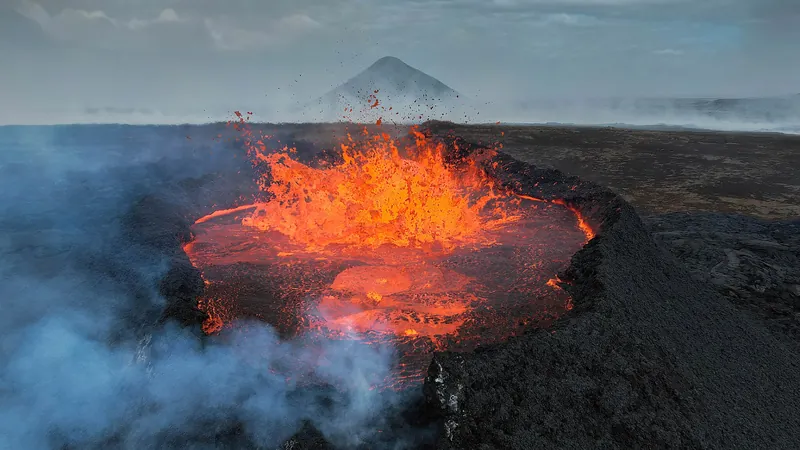
Uncovering the Secrets of Humanity's Survival: The Toba Supereruption 74,000 Years Ago
2025-09-20
Author: Noah
A Catastrophic Event that Shook the World
Imagine facing one of Earth's most colossal disasters 74,000 years ago—a massive eruption known as the Toba supereruption. Tucked away in modern-day Indonesia, this cataclysmic event was over 10,000 times more powerful than the infamous 1980 eruption of Mount St. Helens, sending a staggering 672 cubic miles (2,800 km³) of volcanic ash into the sky.
This eruption created a monstrous crater, spanning 1,000 football fields and plunging the planet into darkness for years. While life near the volcano faced immediate devastation, the ripple effects stretched globally, leading to intense climate changes that could have altered the course of human history.
The Fragile Thread of Survival
Despite the odds, humans managed to emerge from the ashes of the Toba eruption. While populations near the volcano were likely annihilated, scientists are still piecing together how humanity elsewhere survived this near-extinction event.
One prevailing theory, the 'Toba catastrophe hypothesis,' suggests the supereruption triggered a prolonged global cooling that decimated human populations, shrinking them to a mere 10,000 individuals. Genetic analysis of present-day DNA hints at a significant bottleneck, yet the exact causes of this decline remain hotly debated among experts.
Unlocking Geological Clues
To unravel the mystery of the Toba disaster, archaeologists rely heavily on the volcanic materials, or tephra, ejected during the eruption. This includes microscopic volcanic glass, known as cryptotephra, which travels long distances and offers invaluable insight into the eruption's scale.
Retrieving these tiny shards often feels like a daunting needle-in-a-haystack search. Yet, each unique chemical signature helps researchers connect historic volcanic events to their impacts on human life. By excavating archaeological sites, scientists can trace patterns of human behavior both before and after the eruption.
Resilience Amidst Ruins
Shockingly, many archaeological excavations illustrate that humans not only weathered the Toba eruption; they thrived in its aftermath. At Pinnacle Point in South Africa, evidence reveals humans actively occupied the site before, during, and after the eruption, even witnessing an uptick in human innovation.
In Ethiopia's Shinfa-Metema 1, research shows that people adapted to the shifting environment by following seasonal rivers, honing fishing skills, and even adopting advanced technologies like the bow and arrow. Their ability to respond to these changes hints at a remarkable flexibility that helped them survive.
Learning from the Past for the Future
As modern archaeologists uncover more records, a fascinating picture emerges: rather than serving as the sole catalyst for population declines, the Toba supereruption may not have been as catastrophic for humanity as once thought. Instead, it highlights the incredible resilience and adaptability of our ancestors.
Today, we stand better equipped to face potential global disasters. The USGS Volcanic Hazards Program and similar initiatives actively monitor volcanic activity, helping protect us from future threats. Ultimately, studying the Toba eruption doesn't just illuminate our past; it empowers us to navigate future challenges with the same spirit of survival that defined our ancestors.









 Brasil (PT)
Brasil (PT)
 Canada (EN)
Canada (EN)
 Chile (ES)
Chile (ES)
 Česko (CS)
Česko (CS)
 대한민국 (KO)
대한민국 (KO)
 España (ES)
España (ES)
 France (FR)
France (FR)
 Hong Kong (EN)
Hong Kong (EN)
 Italia (IT)
Italia (IT)
 日本 (JA)
日本 (JA)
 Magyarország (HU)
Magyarország (HU)
 Norge (NO)
Norge (NO)
 Polska (PL)
Polska (PL)
 Schweiz (DE)
Schweiz (DE)
 Singapore (EN)
Singapore (EN)
 Sverige (SV)
Sverige (SV)
 Suomi (FI)
Suomi (FI)
 Türkiye (TR)
Türkiye (TR)
 الإمارات العربية المتحدة (AR)
الإمارات العربية المتحدة (AR)